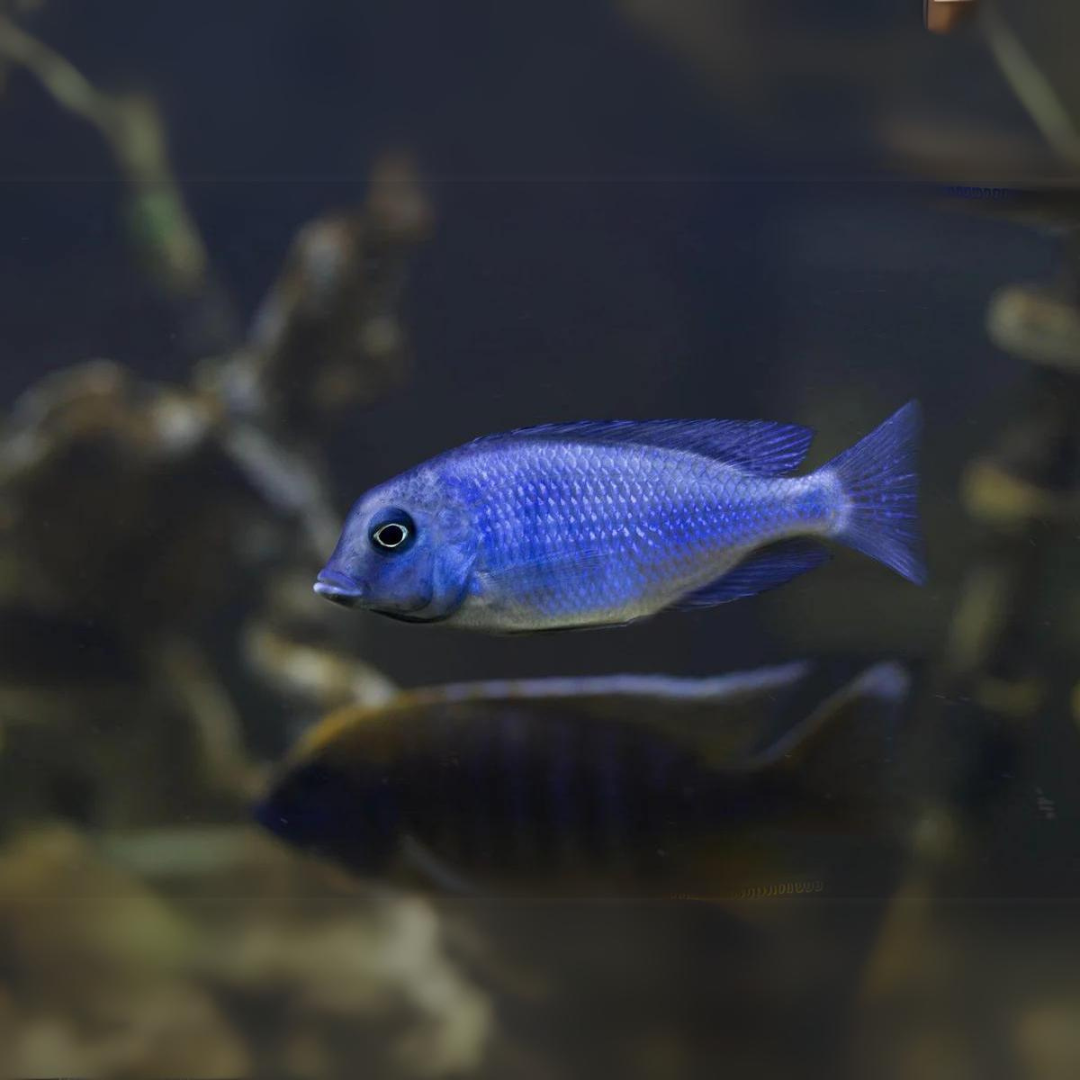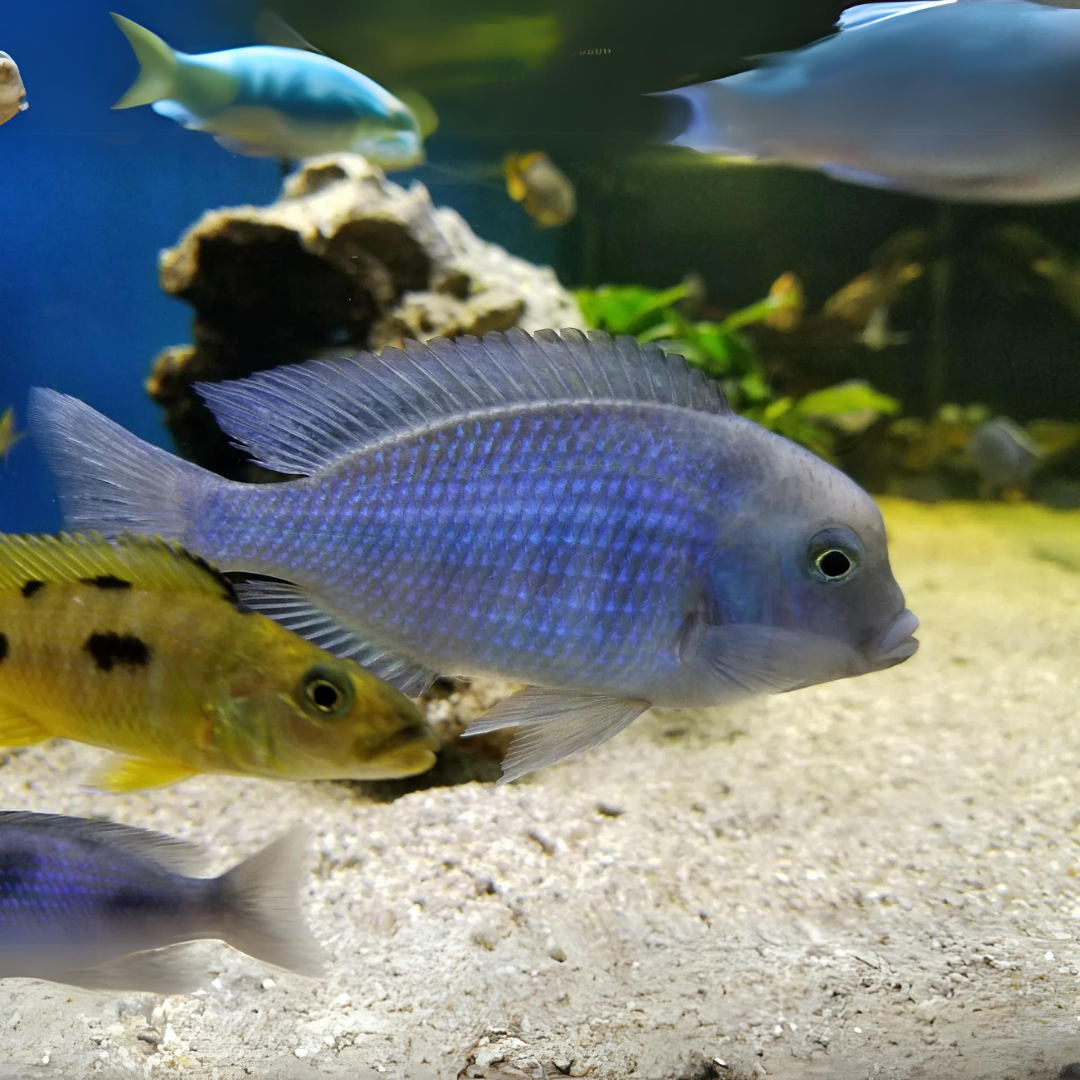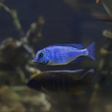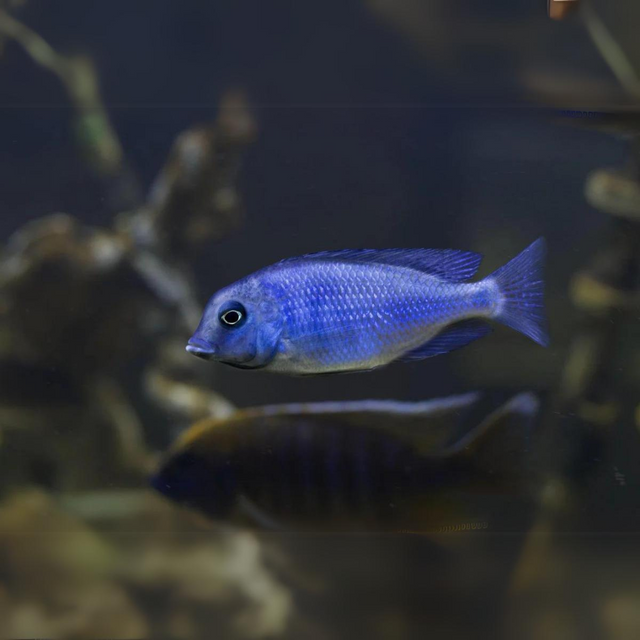Malawi Haps Cichlid Blue Dolphin (Size 3"to 3.5") | Single
Malawi Haps Cichlid Blue Dolphin (Size 3"to 3.5") | Single is backordered and will ship as soon as it is back in stock.
Couldn't load pickup availability
Description
Description
The Malawi Haps Cichlid Blue Dolphin (Size 2" to 2.5") is a striking freshwater fish native to Lake Malawi in East Africa. Known for its unique, dolphin-like head shape, this species is adorned with a vivid blue color that intensifies as it matures. Even at the juvenile size of 2" to 2.5", the fish exhibits a light blue hue, with a streamlined body and distinctive, slightly pointed head.
Appearance: At 2" to 2.5", this juvenile Blue Dolphin is beginning to display its characteristic light blue hue, which will intensify into a brilliant electric blue as it matures. The fish's most distinctive feature is its "nuchal hump" – a bulge on its forehead that resembles the shape of a dolphin’s head. Although not fully developed at this size, the head starts to show the rounded slope that becomes more prominent in adulthood. Its body is elongated and streamlined, built for swift swimming, with fins that are translucent and lightly tinged with blue. The dorsal and anal fins are long and elegant, contributing to its graceful swimming pattern.
Behavior and Temperament: This cichlid is semi-aggressive, especially when it feels threatened or during breeding seasons, so careful selection of tank mates is crucial. It is generally peaceful with larger fish but may bully smaller or similarly sized species. The Blue Dolphin thrives in groups of its own species but can coexist with other cichlids from Lake Malawi as long as the tank is spacious and territorial boundaries are respected. Being highly social, they exhibit intricate behaviors like pairing off during courtship and establishing dominance hierarchies.
Habitat Requirements: In its natural habitat, the Blue Dolphin cichlid is found in sandy and rocky regions of Lake Malawi. To replicate this in an aquarium, a substrate of fine sand with rock formations and caves is ideal. These features provide both hiding spots and territories, reducing stress and aggression. They require a well-filtered tank with a water volume of at least 340 litres for juveniles, but adults may need even more space.
Water parameters are crucial to their health, with an optimal pH range of 7.5 to 8.5 and temperatures maintained between 76°F and 82°F. Like most Malawi cichlids, they prefer hard, alkaline water, and regular water changes are essential to prevent the buildup of nitrates and other toxins.
Diet: Blue Dolphins are omnivores and require a varied diet to thrive. At this stage, juveniles will readily accept high-quality pellets and flake foods formulated for cichlids. As they grow, their diet can be supplemented with live or frozen foods like brine shrimp, daphnia, and occasionally vegetable matter like spirulina to enhance their color and vitality. Overfeeding can lead to digestive issues, so it’s important to feed them in controlled portions.
Lifespan and Growth: Though currently at a size of 2" to 2.5", Blue Dolphin cichlids can grow up to 8 to 10 inches in captivity. They are relatively slow growers compared to other cichlid species, and they can live up to 10 years with proper care, making them a long-term commitment for aquarists.




